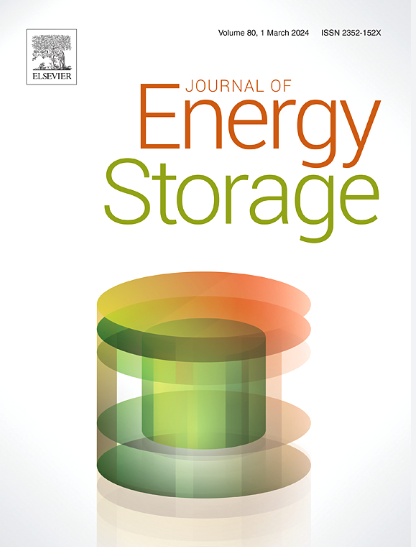一个可靠的管道数据驱动估计的锂离子电池电化学阻抗谱使用物理引导的神经网络
IF 8.9
2区 工程技术
Q1 ENERGY & FUELS
引用次数: 0
摘要
电化学阻抗光谱法(EIS)是评估锂离子电池老化和安全性的重要方法。然而,现有的 EIS 获取方法耗时长、硬件成本高。目前数据驱动的 EIS 估算方法面临可解释性弱和可靠性低的挑战。我们提出了一种基于编码器-解码器模型的可靠 EIS 估算管道。该方法的设计基础是利用 EIS 固有的几何特征构建一套物理引导的双阶段深度学习网络,以提高可靠性。此外,还设计了一种基于线性 Kronig-Kramers 验证的离群值去除算法,以提高可靠性。在两个数据集上的实验不仅实现了平均估计均方根误差分别低于1.6 mΩ和0.62 mΩ,而且证明了所提出方法的优异估计性能和准确性。本文章由计算机程序翻译,如有差异,请以英文原文为准。
A trustworthy pipeline for data-driven estimation of lithium-ion battery electrochemical impedance spectroscopy using a Physics-Guided Neural Network
Electrochemical Impedance Spectroscopy (EIS) is a crucial method for assessing the aging and safety of lithium-ion batteries. However, existing methods for obtaining EIS are time-consuming and costly in terms of hardware. Current data-driven EIS estimation methods face challenges of weak interpretability and low reliability. We propose a reliable EIS estimation pipeline based on an encoder–decoder model. The method is designed based on constructing a set of physics-guided dual-stage deep learning networks using the intrinsic geometric features of EIS for reliability. Additionally, an outlier removal algorithm is designed based on Linear Kronig–Kramers validation for reliability. Experiments on two datasets not only achieved average estimation RMSEs below 1.6 mΩ and 0.62 mΩ, respectively, but also demonstrated the excellent estimation performance and accuracy of the proposed method.
求助全文
通过发布文献求助,成功后即可免费获取论文全文。
去求助
来源期刊

Journal of energy storage
Energy-Renewable Energy, Sustainability and the Environment
CiteScore
11.80
自引率
24.50%
发文量
2262
审稿时长
69 days
期刊介绍:
Journal of energy storage focusses on all aspects of energy storage, in particular systems integration, electric grid integration, modelling and analysis, novel energy storage technologies, sizing and management strategies, business models for operation of storage systems and energy storage developments worldwide.
 求助内容:
求助内容: 应助结果提醒方式:
应助结果提醒方式:


